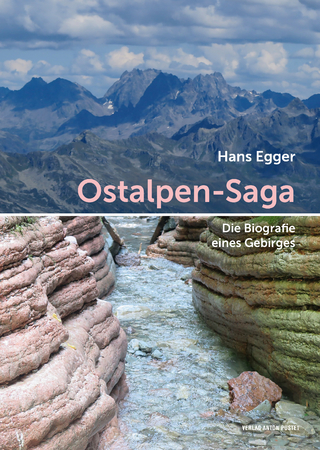
Atlas of Iran's Geology and Mineral Distribution
Springer International Publishing (Verlag)
978-3-319-71727-2 (ISBN)
- Noch nicht erschienen - erscheint am 19.10.2030
- Versandkostenfrei innerhalb Deutschlands
- Auch auf Rechnung
- Verfügbarkeit in der Filiale vor Ort prüfen
- Artikel merken
This atlas presents five layers of information covering each (sub-) district of Iran, from Abadan to Zanjan: a geological map and report, a fault map and report, an airborne magnetic map, a satellite photo-map, and a map of the mineral distribution. In this Atlas, the Geological Survey of Iran has put together five informative layers providing a comprehensive view on the geology and mineral resources and reserves of the country. The atlas was published on occasion of the 50th anniversary of the establishment of the Geological Survey of Iran (GSI).
The economic flourishing of a country depends among others on infrastructural activities and on basic geographical and geological information. Civil engineering projects such as constructing huge structures (dam, power station, highway...) exploring and extracting minerals, reaching to underground water reservoirs, and the recognition and reduction of damages resulting from natural hazards directly or indirectly rely on geological information. In view of the present needs in long term planning and the important role that earth sciences play in this respect, it is necessary that scientists and stakeholders are provided with the latest information available.
1. Geological maps and reports: the previously available set of geological maps of Iran have been extended by almost 15.000 km2 in this volume. Each map with a scale of 1:250.000 covers an area of one degree latitude and 1.5 degrees longitude; the entire country area is covered by 134 sheets of maps. Of these 134 maps, nineteen oil-rich areas have been mapped by a national oil company, while the remaining 115 sheets have been created by the Geological Survey of Iran. Each map comes with a detailed report of the geological history and all processes which occurred since 540 million years ago in the studied area. Information include tectonics, mineral deposits, seismicity, and engineering instabilities and enable the user of the atlas to understand the geology in the area and thus to plan and perform related research, engineering, and disaster mitigation projects.
2. Fault maps with individual reports describe tectonic dynamics and structural results all detail.
3. Airborne magnetic maps show the total intensity of magnetic fields and lineaments and airborne magnetic masses between 1974-1977, according to GSI requirements; two steps of obtaining magneto-metric data were performed which cover the main part of Iran except sedimentary basins in the south and south west.
4. Satellite photo-maps. The Landsat satellite is the first satellite for geo-resources information which was designed and entered into orbit by the American Organization of Aviation and Space Travelling in 1972 and was presented with second and the third generations.
5. Mineral distribution
This Atlas is put together by a group of eight authors from the Geological Survey of Iran.
Preface.- Geological map, Geological report, Fault map, Fault report, Total Magnetic Intensity Map, Magnetic Field Contour map, Satellite photo-map, Map of Mineral Distribution of the following regions.- Abadan.- Abadeh.- Abdoughi.- Aran.- Amol.- Ardabil.- Ardakan (Gachsaran).- Ardakan.- Urmia.- Isfahan.- Eghlid.- Allahabad.- Anar.- Anarak.- Ahar.- Ahvaz.- Iranshar.- Ilam.- Bojnord.- Borujen.- Boshruyeh.- Bam.- Bandar-e Anzali.- Bandar-e Abbas.- Bandar-e Lengeh.- Behbahan.- Byram.- Birjand.- Pishin.- Piveshk.- Taybad.- Poldasht.- Torbat-e Jam.- Torbat-e Heydarieh.- Torud.- Takab.- Tehran.- Jajrom.- Jazmurian.- Jask.- Jandaq.- Jahanabad.- Jahrom.- Chabahar.- Chah Sorb.- Hajjiabad.- Kharturan.- Khash.- Khorramabad.- Khur.- Khormoj.- Khoy.- Darab.- Dargaz.- Hamun-e Helmand.- Dezful.- Dehsalm.- Dehloran.- Ramhormoz.- Ravar.- Rafsanjan.- Zabol.- Zahedan.- Zanjan.- Sari.- Saveh.- Sabzevar.- Sabzevaran.- Saravan.- Sarakhs.- Serow.- Semnan.- Sanandaj.- Sirjan.- Rakht.- Shahr-e Kord.- Shiraz.-Tahrui.- Tabas.- Ferdows.- Fanuj.- Qaen.- Rasht.- Qasr-e Shirin.- Qom.- Kazerun.- Kashan.- Kashmar.- Kabudrahang.- Kerman.- Kermanshah.- Kangan.- Kuh-e Sepiazar.- Kuh-e Korkhud.- Kuh-e Gugerd.- Kuhdasht.- Gorgan.- Gazik.- Golpayegan.- Gonabad.- Genaveh.- Gonbad-e Kavus.- Lar.- Lakarkuh.- Maku.- Marivan-Baneh.- Mashhad.- Mugan.- Mahabad.- Mianeh.- Minab.- Naybandan.- Nain.- Absard.- Nareh Nou.- Neyriz.- Nikshahr.- Hamedan.- Yazd.
| Erscheint lt. Verlag | 19.10.2030 |
|---|---|
| Übersetzer | Marziyeh Esterabi Ashtiani, Behrouz Farhatjah, Neda Sharifi Soltani |
| Zusatzinfo | Approx. 1200 p. 1000 illus. in color. |
| Verlagsort | Cham |
| Sprache | englisch |
| Original-Titel | - |
| Maße | 155 x 235 mm |
| Themenwelt | Naturwissenschaften ► Geowissenschaften ► Geologie |
| Naturwissenschaften ► Geowissenschaften ► Mineralogie / Paläontologie | |
| Technik ► Elektrotechnik / Energietechnik | |
| Schlagworte | Economic Geology Iran • Geological maps • Geophysical analysis • Georesources of Iran • mineral deposits • mineral resources of Iran |
| ISBN-10 | 3-319-71727-8 / 3319717278 |
| ISBN-13 | 978-3-319-71727-2 / 9783319717272 |
| Zustand | Neuware |
| Haben Sie eine Frage zum Produkt? |
aus dem Bereich


